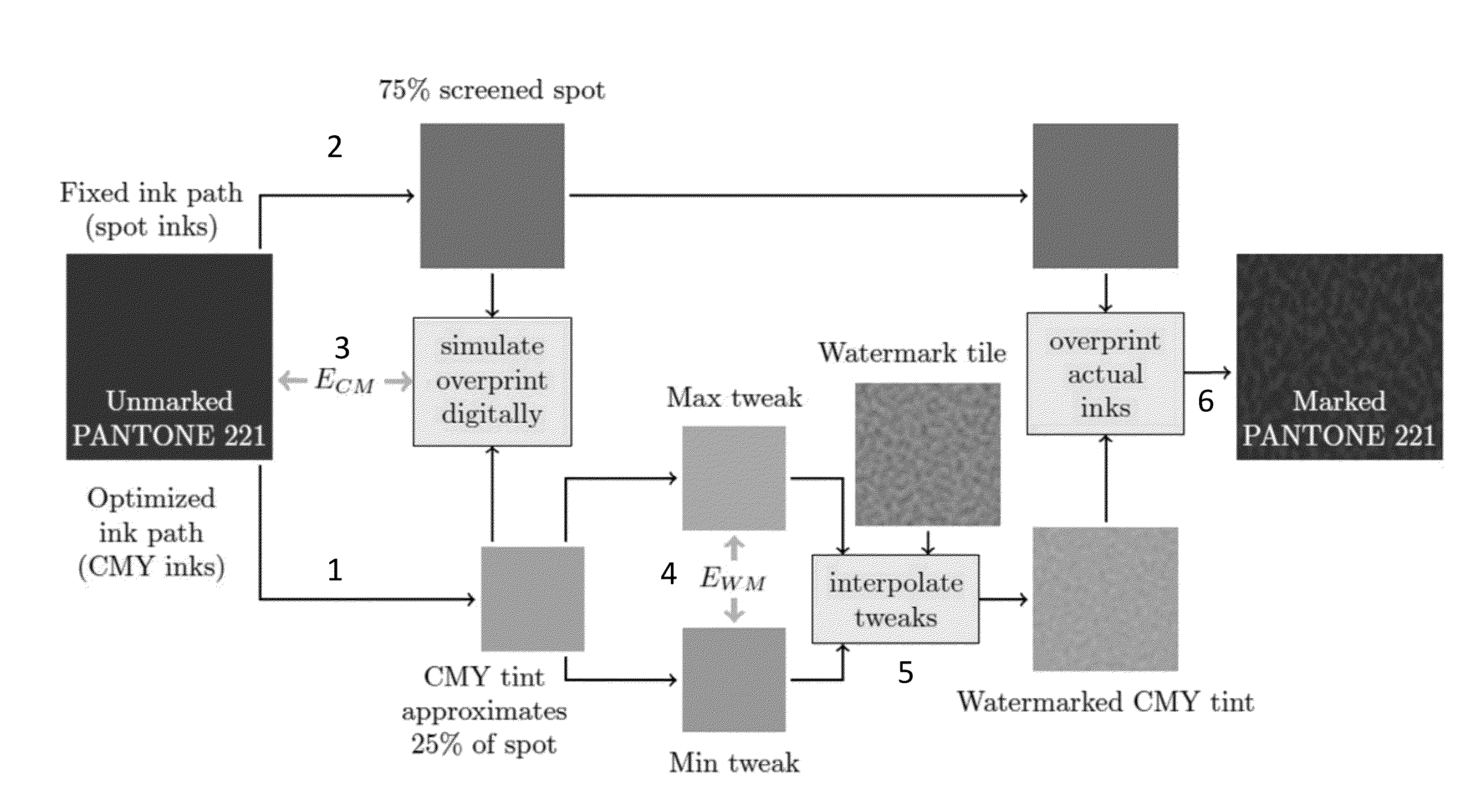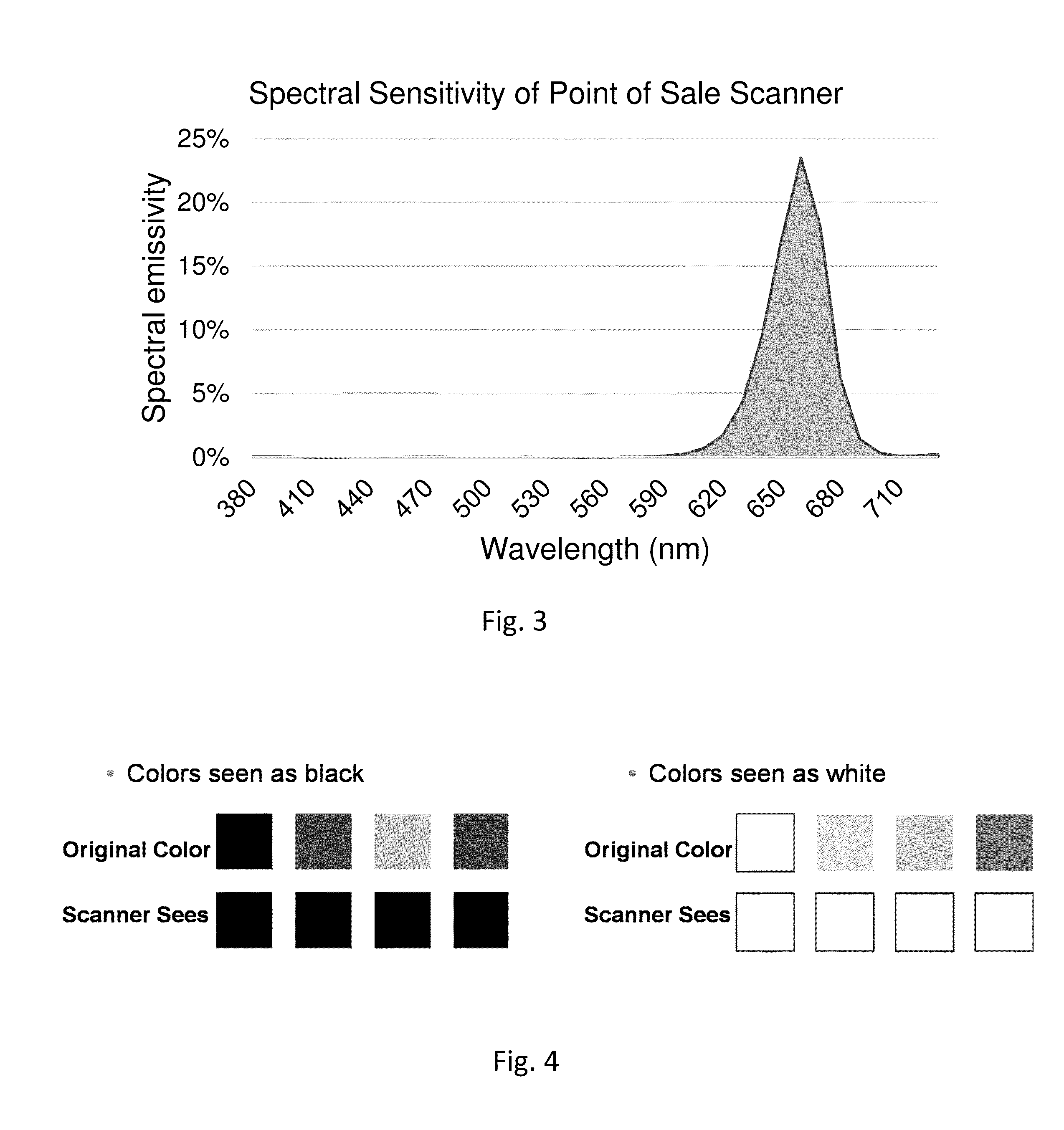Spot color substitution for digital watermarking
a digital watermarking and spot color technology, applied in image watermarking, instruments, computing, etc., can solve the problems of not considering the spatial-color sensitivity of the human eye, the inability to print using every color in a design, and the inability to obtain full color spectral data
- Summary
- Abstract
- Description
- Claims
- Application Information
AI Technical Summary
Benefits of technology
Problems solved by technology
Method used
Image
Examples
Embodiment Construction
[0078]There are four (4) main sections that follow in this Detailed Description (I. Adaptive Embedding Framework; II. Spot Color and Process Color Data Hiding; III. Additional Implementations and Description; and IV. Implementations of Adaptive Embedding Framework). These sections and their assigned headings are provided merely help organize the Detailed Description. Of course, description and implementations under one such section is intended to be combined and implemented with the description and implementations from the other such section. Thus, the sections and headings in this document should not be interpreted as limiting the scope of the description.
[0079]I. Adaptive Embedding Framework
[0080]Portions of this disclosure are described in terms of, e.g., data hiding for product packaging (sometimes just referred to herein as “packaging” or “package”) and other printed objects. These techniques can be used, e.g., to alter or transform how color inks are printed on various physica...
PUM
 Login to View More
Login to View More Abstract
Description
Claims
Application Information
 Login to View More
Login to View More - R&D
- Intellectual Property
- Life Sciences
- Materials
- Tech Scout
- Unparalleled Data Quality
- Higher Quality Content
- 60% Fewer Hallucinations
Browse by: Latest US Patents, China's latest patents, Technical Efficacy Thesaurus, Application Domain, Technology Topic, Popular Technical Reports.
© 2025 PatSnap. All rights reserved.Legal|Privacy policy|Modern Slavery Act Transparency Statement|Sitemap|About US| Contact US: help@patsnap.com



